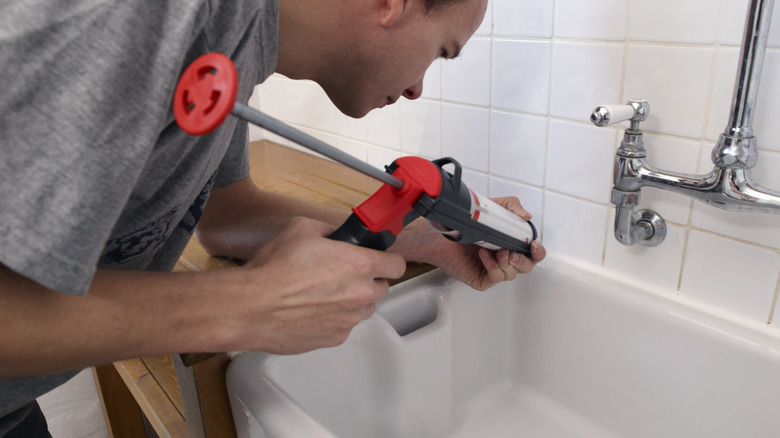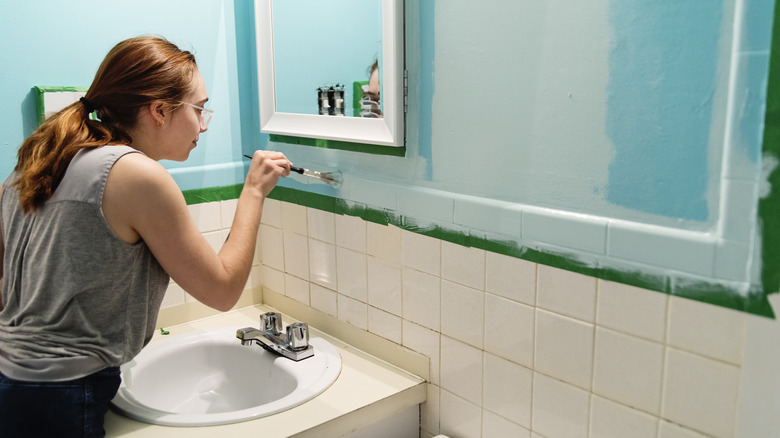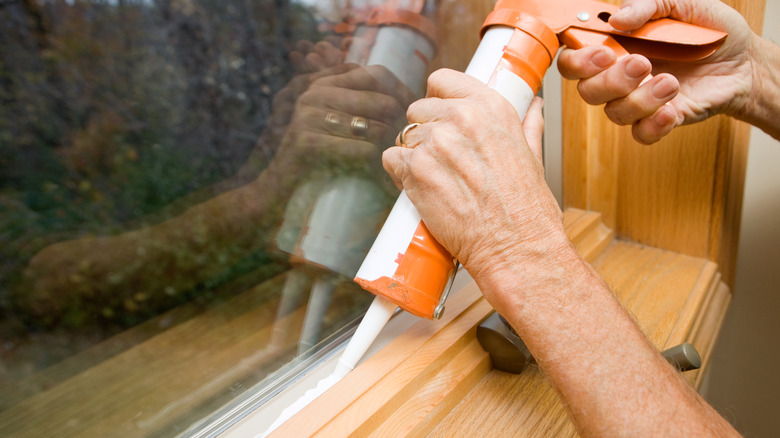Can I Paint Over Silicone Caulk?
When you need to protect seams from water penetration, such as around a bathtub or a sink, the perfect caulk for this job is silicone caulk, also called a sealant. It is highly durable, meaning it could last up to 20 years, even if it encounters fluctuating temperatures. With such a long-lasting material, though, you may want to be able to paint over it occasionally, should you remodel or renovate a room and introduce a new color scheme. Technically == 100% silicone caulk is not paintable == it is designed to be flexible, allowing it to maintain its waterproof capabilities.
Silicone caulk typically comes in white, which allows it to match almost any existing color scheme. It's also often available as a transparent sealant. Occasionally, you may be able to apply a thick layer of paint over the top of the silicone caulk that will remain in place, because it will form a thick film. However, once the material begins to expand or contract under humidity or temperature changes, which is normal for a flexible type of silicone, the paint is likely to crack and peel away, meaning you're going to have to redo the work. Because it's so difficult to paint over the top of silicone caulk, you'll want to consider a couple of other options.
Other options for painting areas where you need to apply silicone caulk
If you must use silicone caulk for your project, you can attempt to paint over it, but there's no guarantee that it will work. Perhaps the best option is to try using silicone as the base layer of caulk. Then apply a paintable caulk layer over the top, as it should adhere to the silicone and not affect its ability to repel water and remain flexible.
You also could paint the color first and then apply a transparent caulk over the top. This may allow the color to show through, although it may not look great afterward, especially if the silicone is too thick. Or use 80-, 100-, or 120-grit sandpaper over the silicone's surface to rough it up a bit. You then have a better chance of having paint stick to it. Some pros recommend wiping down the caulk with denatured alcohol before or after you sand it. This also makes the surface rougher, encouraging adherence of the paint. It's possible that you could find a type of silicone that has a color that matches what you'd want to use in the room, but this is extremely difficult. White and clear are by far the most common color options available.
Ultimately, because there are so many other types of caulk that are easily paintable while delivering similar flexible and waterproof properties, you may simply want to choose a material other than silicone for your project.
Best ways to find a paintable type of caulk
When you want to paint your home like a professional, including going over the top of any caulk you are using, it's important to pick the right tube. When you are purchasing a tube, look on the container. It should list whether it is a paintable material. It also should list whether it's waterproof, as some types of caulks may not provide waterproof capabilities as efficient as silicone.
Latex or acrylic latex caulks are often used around drywall and masonry. Typically, this material is paintable. However, there are options with latex caulk to add other materials to give it slightly different properties. For example, you could add silicone to the latex, which enhances the material's flexibility after application and allows it to reduce issues with shrinking. Such mixtures may be paintable, depending on the amount of silicone mixed into the formula. Check the container to see whether it offers this capability.
You also may want to try a siliconized acrylic latex caulk to give yourself the ideal mix of waterproof protection and the ability to paint it. Although many contractors will only use this material outdoors, it also will work indoors. It is an option that's easy to clean up afterward, too. Another option is a vinyl latex caulk, which offers both waterproof capabilities and remains paintable after it dries. It's usable either indoors or outdoors, as it offers dust resistance.


